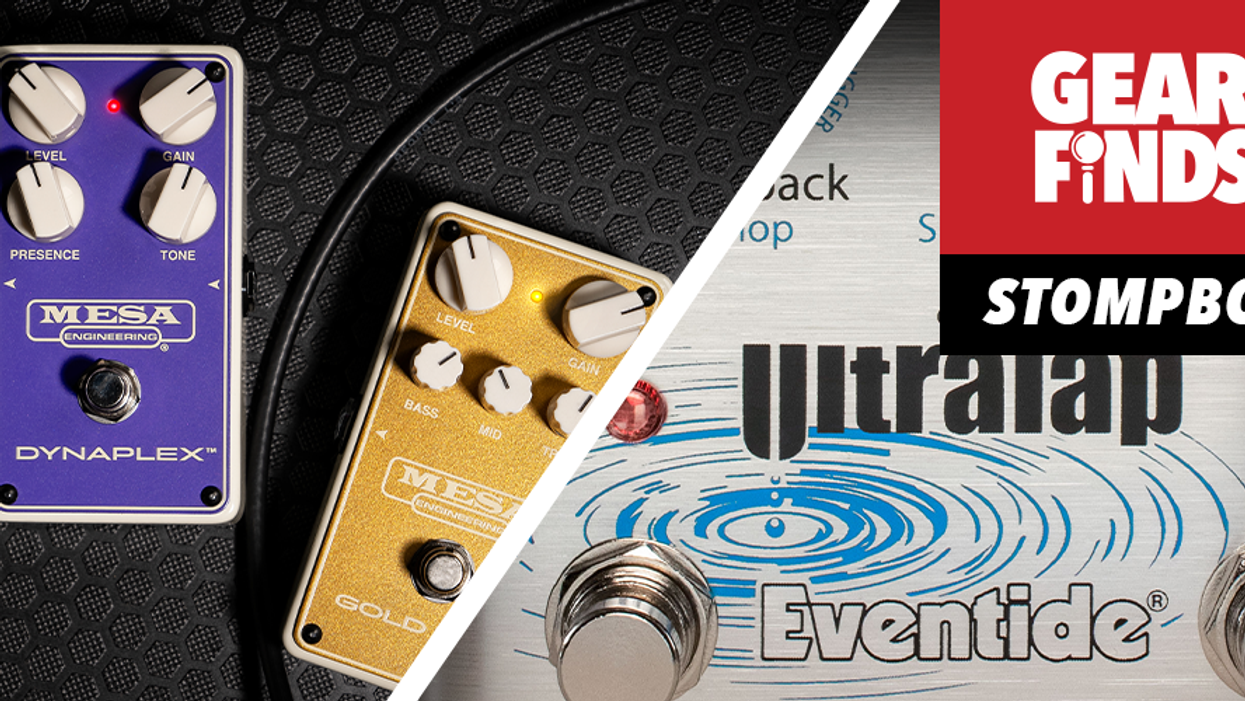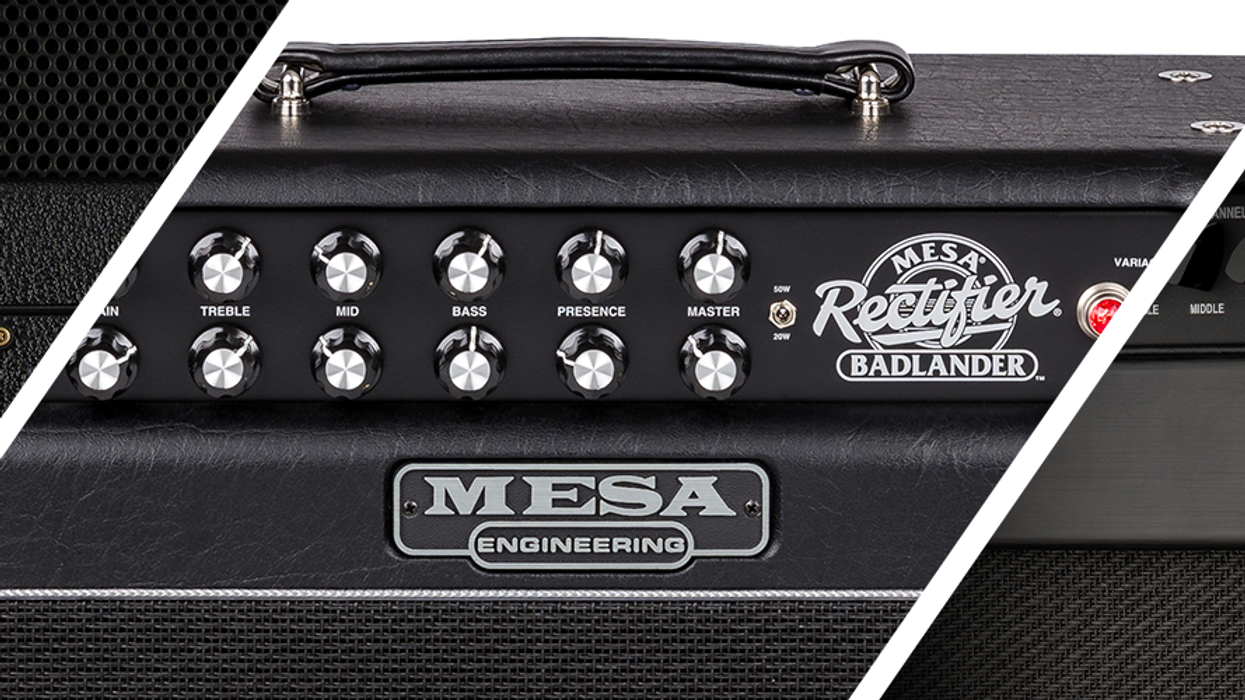RatingsPros:Super-authentic, immersive spring-reverb tones. Much attention paid to subtle differences among reverb types. Neuro app provides flexible editing options. Cons: Small footprint means many powerful features are buried several clicks away. Street: $229 ($249 with Tap Switch package) Source Audio True Spring sourceaudio.net | Tones: Ease of Use: Build/Design: Value: |
Though it’s harder than ever to nitpick the sonic authenticity of good digital effects, there’s little arguing that spring reverb, with its complex clanging overtones and electro-mechanical je nais se quoi, remains tough to emulate via code. Still, pedal designers keep honing in on the sound of the real thing. And while Source Audio’s True Spring isn’t the first digital spring reverb-modeling stompbox, few have closed the digital/analog authenticity gap with so much utility and attention to the variation in spring reverb types.
The True Spring features excellent models of short- and long-tank reverbs, and a Fender-style tank emulation. But it’s also stuffed with extra features, including superb tremolo models derived from Source Audio’s excellent Vertigo tremolo pedal, additional downloadable reverb models that range from cheap and trashy-sounding to lush, and customizability via Source Audio’s Neuro app that can help you subtly tailor the pedal to your rig.
Reverb Sauce Reduction
Source Audio, like most digital modeling specialists, has to walk the line between delivering processing power and creative options, and building intuitive stompboxes small enough for busy pedalboards. The One Series platform effectively addresses the space concerns. At just less than 2 3/4" wide and about 4 1/2" long, the True Spring is barely bigger than a Boss pedal. And its four-knob array for mix, dwell, effect level, and tone, and spring-type toggle, really couldn’t be more intuitive.
But there’s a tradeoff for this design economy. The compact size means there are no dedicated controls for the tremolo on the pedal face. Source Audio executed a smart middle-road solution to the problem: depressing the small input control button on the pedal’s crown momentarily converts the reverb’s dwell and tone knobs to tremolo depth and rate controls. You can also change the function of the toggle switch, enabling selection of optical, bias, and brownface-style harmonic tremolo circuit emulations. Executing this operation is simple in isolation. But even the act of turning the tremolo on and off mid-performance is tricky if you don’t have the optional Source Audio Tap Switch. The switch itself is compact and about 2 1/4" wide and 2 1/2" tall. It can be assigned to control tremolo bypass and tap tempo. Why didn’t Source Audio just make the True Spring a bit wider to accommodate a second footswitch and controls for the tremolo? If you use few pedals, the design compromise probably makes less sense. For busier boards, the compact footswitch arguably offers more layout flexibility.
The True Spring’s design economy extends to the single USB port on the pedal crown, which you use to interface with the desktop Neuro editor and for MIDI control of the pedal. The pedal also has very flexible stereo capabilities, including basic mono-to-mono, mono-to-stereo, and stereo-sum-to mono options. The second audio input also doubles as a connection for the Neuro Mobile app.
Though you can use the True Spring to very satisfactory ends without ever interfacing with the Neuro app, it’s well worth exploring. In addition to shaping reverb performance parameters, you can also execute operations from fast and easy firmware and software updates to creating presets. You’re also able to create and store up to three presets using the footswitch, if you prefer to skip the Neuro editor entirely.
Wet and Wild Variations
It’s a testament to the ears of Source Audio’s engineers that True Spring sounds better and more colorful the louder you play. (Aspiring Dick Dales wielding vintage Dual Showmans, take note).
The short spring reverb is the most succinct in terms of attack overtones and trails, which means you can dial up very intense reverb tones without overwhelming other harmonic colors in your instrument and amplifier. The punchy, less sprawling tone picture also makes it a nice match for fuzz, which can be a messy pair in spite of their vast theoretical psychedelic potential.
The long spring setting has darker, more cave-like overtones and an explosive, dripping-wet attack. It has the most metallic overtones, which can obscure picking and harmonic nuance much more than the other two settings. I preferred the long spring sounds at subtle dwell settings, where the clanging overtones could tuck in alongside other harmonic elements in the signal. But it’s a great setting if you want to be perversely clear about the fact you’re using vintage reverb flavor.
The tank reverb setting is beautiful, and it’s arguably the True Spring’s centerpiece. It also helps you understand why reverb and surf music and iconography are so naturally intertwined. The trailing overtones are effervescent and pleasantly granular, sounding uncannily like the hiss of a wave’s last tendrils receding across the sand. And while tank reverb has a reputation as the most intense spring-reverb type, it feels more complex and subtle in many respects than the long tank engine. The trails have more organic overtones, and though there is less radical range in the tone control, the more nuanced color shifts from dark to bright make tailoring a reverb sound for a given amp, guitar, or mix a pleasure.
The level control provides up to 6 dB of boost, adding extra presence to super-blown-out reverb echoes that can obscure individual notes, chords, and melodies. It also lends a cool reverb-tinged and slightly dirty boost when you minimize the mix.
The tremolo effects, meanwhile, are lovely. The optical tremolo, associated with Fender’s bigger blackface amps, is the choppiest of the bunch. It’s killer for accenting chugging rhythm patterns and propulsive strumming. The beautiful brownface-style harmonic setting is colored with subtle pitch-shifting effects that smooth the waveforms and add a sleepy, shifting undercurrent that beautifully accents languid chord melodies. The bias tremolo strikes a sort of middle ground between the two, generating pitch-regular rhythmic pulses with smoother contours.
The Verdict
The quality of the True Spring’s reverb tones is superb. And given that real spring reverbs exhibit considerable differences—even among the same type—the True Spring is remarkable for the many ways in which is manages authenticity. The lack of a dedicated control set for the excellent tremolo effects will be a bummer for some. But on the whole, the True Spring is a smart compromise between size, power, price, and functionality.
Watch the First Look:









![Rig Rundown: Russian Circles’ Mike Sullivan [2025]](https://www.premierguitar.com/media-library/youtube.jpg?id=62303631&width=1245&height=700&quality=70&coordinates=0%2C0%2C0%2C0)

















